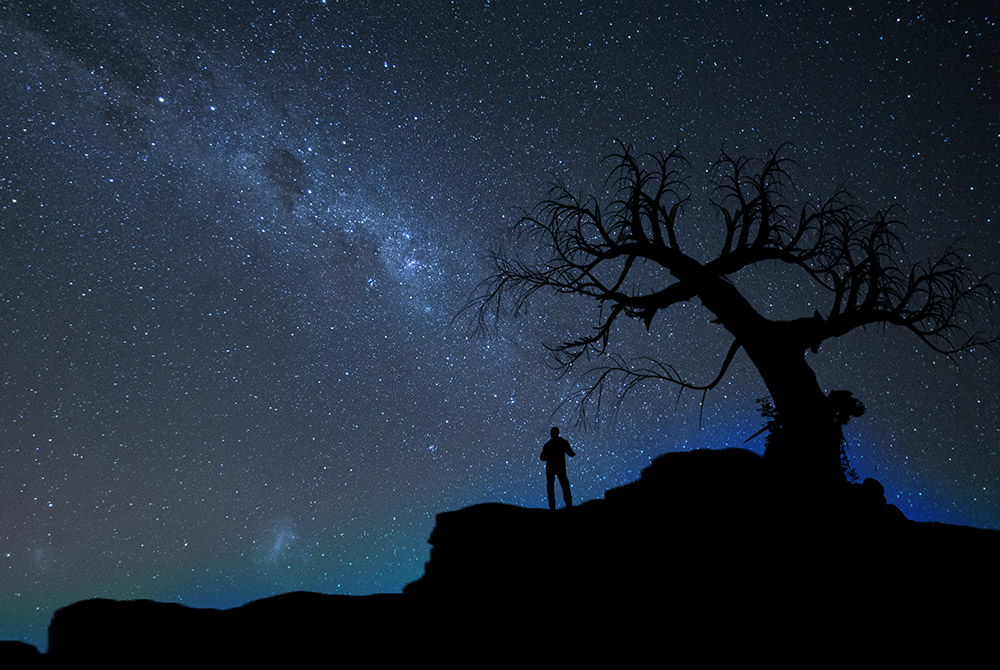
(Unsplash/Vincent Chin)
Editor's note: This Lent, NCR is holding live spiritual conversations every other week, hosted by our Soul Seeing editor, Michael Leach. Today, join Franciscan Fr. Richard Rohr at 2:30 p.m. Eastern/1:30 p.m. Central live on YouTube or Facebook for a conversation about Lent and the Resurrection. The videos are recorded for viewing after the event. Check the Soul Seeing for Lent series page for past conversations.
It is surely no liturgical accident that the celebration of the Resurrection goes on for a full 50 days and then expands into Pentecost, which takes up the whole rest of the church year. What was first just a daring truth in the body of Jesus is made universal truth by the descent and indwelling of the Holy Spirit upon all the races — unexpectedly and uninvited (Acts 2).
It seems to me this is trying to name the ubiquity, universality, gratuity and timelessness of the Easter message. It takes a long time to recognize and absorb that which is already and everywhere. As we all know, we take the familiar for granted. In fact, we hardly see it.
Most preachers on the resurrection are naturally drawn to the dramatic line of Paul's "If Christ has not been raised, our preaching is in vain and your believing is useless" (1 Corinthians 15:14b), we say with a flourish. But I have really never heard a preacher emphasize the previous verse of 15:14a, where he has just said, "If there is no resurrection of the dead, Christ himself cannot have been raised"! Isn't that extraordinary?! The universal principle comes first, and only then is it illustrated and "guaranteed" in the risen Christ. He is the universal exemplar and promise representing all of creation.
The mystery of resurrection is first of all the constant and universal pattern, which is then made dramatic, daring and trustful in the personal body of Jesus! Science is now helping us to think this way. I am told, for example, that there are the same number of atoms in the universe that there were five seconds after the Big Bang happened approximately 13.8 billion years ago. They just keep playing musical chairs and by all evidence — at ever higher levels of complexity and consciousness.
It is not poetry to say that we were all once stardust, and what we are yet to be — is the good surprise, gift and pure grace of God. Now I find it hard to celebrate Easter in any other way, and as I am about to begin my 79th year, it no longer seems like a huge act of faith in a onetime miracle that no one can prove. It is right always-already-now, breaking through all kinds of suffering, tragedy and pain. I have seen it in my lifetime, and the lifetimes of my family and friends in a thousand forms. Admittedly, often shrouded by grief and sadness, and that is why we need an exemplar to lead us and help us across "the tragic gap" that human existence always is.

(Unsplash/Luca Baggio)
Nothing is the same forever, says modern science. Ninety-eight percent of our bodies' atoms are replaced every year. Geologists with good evidence over millennia can prove that no landscape is permanent. Water, fog, steam and ice are all the same thing, but at different stages and temperatures. The preface to the Catholic funeral liturgy says, "Life is not ended, it is merely changed." Science is now giving us a very helpful language for what religion rightly intuited and imaged, albeit in mythological language. Remember, myth does not mean "not true," which is the common misunderstanding, but it actually refers to things that are always true!
But God could not wait for modern science to give history hope; people just needed to believe that Jesus "was raised from the dead" so that the hope and possibility of resurrection could be planted in our deepest unconscious. Jesus' first eternal life, his "necessary" death, and his resurrection into the ongoing Christ life is the archetypal model for the entire pattern of creation. He is the microcosm for the whole cosmos, or the map of the whole journey, if you need or want one. Nowadays most folks do not seem to think they need that map, especially when they are young. But the vagaries and disappointments of life's journey eventually make you long for some direction, purpose or goal beyond getting through the day.
Anybody who holds any kind of unexplainable hope believes in resurrection, whether they are formal Christians or not, and even if they don't believe Jesus was physically raised from the dead. I have met such people from all kinds of backgrounds, religious and non-religious. I do, however, believe in the material resurrection of Jesus because it affirms what the whole physical and biological universe is also saying — and grounds it as something more than a mere spiritual belief. It must also be a material belief!
Advertisement
A trust in the physical resurrection of Jesus frees believers, if we let it, from the stripped-down belief in a Christ who came merely to "save souls for heaven" instead of liberating and healing bodies in this world. If matter is inhabited by God, then matter is somehow eternal and when the Creed says we "believe in the resurrection of the body," it means our bodies too and not just Jesus' body! As in him, so also in all of us. As in all of us, so also in him. So I am quite "conservative" and orthodox by most standards on this important issue, although I also realize it seems to be a very different kind of embodiment from all of the Resurrection accounts in the Gospels.
The Christian narrative is saying that reality's true story from the very beginning has always been Incarnation, that God's hiding place and place of epiphany is the physical world. Resurrection is, therefore, not a one-time anomaly in the body of Jesus, rather the Jesus pattern is revealing the pattern of everything that God has created.
Easter is not one day, but Easter is apparently every day and everywhere.







